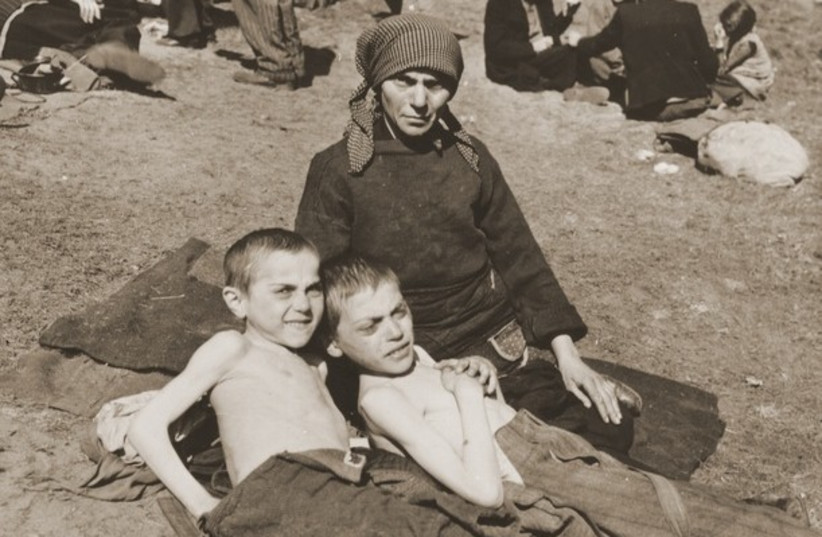Never-before-seen footage of Holocaust survivors being liberated by US Army soldiers during the last stretch of World War II has been unearthed at the United States National Archives, according to a Wednesday report by the Independent.
On Friday, April 13th, 1945, soldiers from Tanks 12 and 13 from the US Army's 743rd Tank Battalion led by a scouting jeep liberated a train transport with thousands of Holocaust victims who had left the Bergen-Belsen concentration camp one week before and were bound for Theresienstadt.
This train was one of three that left Bergen-Belsen for Theresienstadt the previous week, only one of which ultimately arrived; the other was liberated by USSR forces before reaching its destination.
Who took the pictures?
Sgt. George Gross, commander of Tank 12, and Major Clarence L. Benjamin both had cameras at the time and snapped photos during the April 13th liberation, which have now come to light at the National Archives for the world to see.
After the war, according to the USHMM, Gross received a Ph.D. in English literature and served on the faculty of San Diego State University. Toward the end of his life, Dr. Gross worked with high school teacher Matthew Rozell, who researched the Magdeburg death train as part of a teacher's fellowship at the United States Holocaust Memorial Museum.

Survivors, mostly women and children, can be seen in the photos wearing their normal clothes, rather than striped outfits. Many of them are visibly emaciated, standing alongside US Army tanks next to the train tracks.
Researchers also unearthed a rare video from the day's events, showing suffering survivors and US soldiers distributing food, sweets, and cigarettes. In the background, viewers can see a nearby village being shelled by German artillery from across the Elbe River.
Sgt. Gross retold his experience of the encounter years later, according to ynet. "Everyone looked like a skeleton, so starved, their faces sick," he said. "And there was something else. When they saw us, they began to laugh with joy, if you can call it laughter. It was more like an outburst of pure, almost hysterical relief."
Translator Gina Rappaport
One of the survivors in particular, Gina Rappaport, featured prominently in the photographs taken by Maj. Benjamin. According to the United States Holocaust Memorial Museum (USHMM), she served as a translator for the American soldiers during the liberation.
Per the USHMM, Rappaport (later Leitersdorf) had survived the Warsaw ghetto prior to her incarceration in Bergen-Belsen. She was fluent in several languages.

"I shall never forget what I owe to the American Army," Rappaport wrote in her memoir later on in life. "I hope I will be able to estimate its right value, what the Americans have done for us. Now, after five years of suffering, I shall know to appreciate my liberty."
